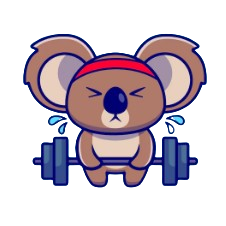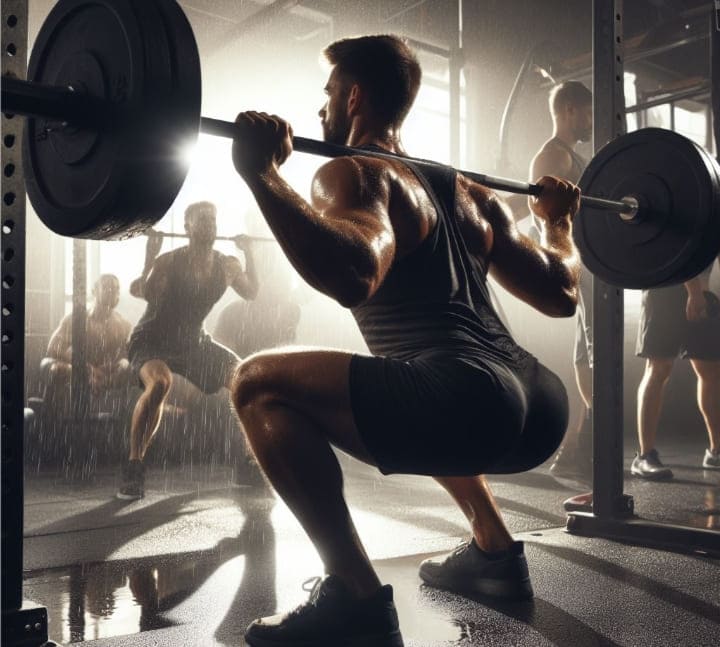How to Do a Squat with Perfect Form
Many wonderful things, in our humble view, are “basic” (read: pumpkin spice lattes). The squat is among the most fundamental exercises you can do for strength training. And evidence that simplicity is good—incorporating squats into your strength training regimen can have a significant positive impact on your ability to gain strength and muscle.
Grab your PSL and continue reading to find out why squats are essential for all athletes, how to perform them properly, and some common form errors to avoid.
What Is a Squat and What Muscles Do They Work?
“Squats work all the major muscles in the lower body,” says Austin Cagley, who leads Global Instructor Development at Peloton. This includes:
- Quadriceps
- Hamstrings
- Glutes
- Calves
“They also engage the core muscles,” says Cagley. “This helps to stabilize the body when you’re doing the movement, both as you lower into the squat and raise back up to the starting position.”
Squat variations can help you hit even more muscle groups. As you progress from a basic squat, trying different types of squats such as a sumo squat (a squat with a wider stance, feet slightly angled out to the sides) or jump squat will work areas like your hip flexors and adductors (the muscles that go from the pelvic bone to the inner thigh). Plus, adding weight with squat variations like an overhead squat (squatting with a light-to-moderate weight overhead) or dumbbell squats (a squat holding weights in each hand, anywhere from 10 pounds to 15 pounds) will increase upper body resistance, hitting the back and shoulder muscles with it.
What Are the Benefits of Doing Squats?
Yes, squats are a lower body exercise, but they also offer several benefits for your fitness and strength, says Cagley. Below are some of the perks of perfecting your squat.
Squats Increase Muscle Mass and Strength
There are a few ways squats can promote full body muscle building and increased strength. First, squats are a dynamic exercise. This means it’s a move that pushes muscles through a specific range of motion. To do this, it uses many muscles at once. This is different from targeting one muscle through a static exercise, like a plank.
Because squats are a compound exercise that uses several muscle groups to perform one movement it helps put the body in an anabolic state. This is a post-workout state when cells in the body are very sensitive to nutrients like insulin. By fueling properly, these cells build muscle mass and help you get stronger. This is also why it’s important to balance cardio with strength training, so that your body can switch to this anabolic state and build muscle.
Squats Improve Athletic Performance
Whether you run, ride, swim, compete with others, or want to push yourself and PR, all strength training is important when it comes to athletic performance. According to a review published in Sports Medicine, strength training, like squats, improves neuromuscular efficiency. This is the body’s way of telling the nervous system which muscles to use. Strength training lets you use less energy and more force, increasing speed, power, and endurance for athletes.
Squats Reduce the Risk of Injury
You squat a lot in life without realizing it. Sitting, lifting groceries or a kid, and even some sports and activities require a supported squat. That’s why focusing on your squat form is not just something that will make you stronger, it will protect your joints and muscles, too. Research published in the Strength and Conditioning Journal found that a proper squat form preps the body for the physical demands it encounters and protects the back and lower body from injury during functional movements and training.
Squats Boost Bone Density
Bone density is a measure to predict how likely bones are to break, per the National Council on Aging. As you age, especially for those 50 years and older, your body loses bone mass faster than it can rebuild it. This can lead to osteoporosis, a condition that affects 43.3 million adults in the U.S., according to the Centers for Disease Control and Prevention (CDC).
One study published in the Journal of Strength and Conditioning Research found that incorporating squats into a strength training routine improved the skeletal health of postmenopausal women with osteoporosis. Another study found that resistance training with squats improved bone mineral density in young adult women.
Related Articles

Nutrition
Squats Help With Balance and Coordination
According to research from the Journal of Athletic Training, there is a direct link between core control, balance, and a reduced risk of injury. A squat requires you to engage your core as you complete the full movement. It’s the activation of your core that stabilizes you, improving your balance. Plus, when you have better balance, you’re also more coordinated, and it’s easier to engage the lower body muscles needed to complete a squat—not to mention sports and other activities.

How to Do A Squat with Proper Form
You won’t get the results you want if your squat form is incorrect. Practicing proper posture is key. As you start doing more squats, go for quality over quantity. Once you’ve gotten the form down, you can build your reps from there.
To do a basic squat, Cagley says to follow these steps:
- Stand with your feet shoulder-width apart and your toes slightly pointed out. This helps drive the knees out, instead of caving in.
- Engage your core muscles and keep your back straight.
- Lower your body down by bending your knees and hips, as if you were about to sit in a chair.
- Keep your back straight and your chest up throughout the entire movement.
- Lower your body down until your thighs are parallel to the ground or slightly lower.
- Push through your heels to stand back up to the starting position.
Here are some checkpoints to take note of in the movement that will help determine if your form is correct:
- Your back is straight and your chest is up.
- Your knees are tracking over your toes, not beyond them.
- Your weight is evenly distributed on both feet.
- Your core muscles are engaged throughout the entire movement.

Common Squatting Mistakes and How to Fix Them
“It is important to perform squats with proper form to avoid injury,” says Cagley. “Since squats are a compound exercise that engages several muscle groups, if you squat with incorrect form, you put yourself at risk of injuring your knees, back, and other joints.”
Depending on your mobility, you may need to adjust the depth of your squat, adds Cagley. Here are some common squatting mistakes, and what you can do to fix them.
- Rounding your back. “Keep your core engaged and your back straight throughout the entire movement,” says Cagley.
- Collapsing your knees in. Make sure your knees are tracking over the toes, with your toes pointed slightly out to help push those knees out instead of in.
- Not engaging your core. “Brace your core muscles before you start the movement and keep squeezing them throughout the entire movement,” says Cagley. “Imagine you are about to sneeze. Feel your core tense up and hold that.”
It’s best to do squats at first using only your bodyweight as resistance. As you get a handle on proper form, you can slowly add weight to your squats to increase the effort. When you do add weight to your squats, keep it light at first. Anywhere from five pounds to 10 pound dumbbells is a good starting point.
Explore Lower Body Classes

10 min Glutes & Legs Strength
How Often Should You Do Squats?
Frequency is key to see the benefits of squats. Aim to incorporate squats sets into your training two to three times a week, or one to two times a week if you’re a beginner. “This will give your muscles enough time to recover between workouts,” says Cagley.
“If you’re new to squats, start with two to three sets of 10 to 12 repetitions,” says Cagley. “As you get stronger, you can increase the number of sets and/or repetitions. You can also increase the weight you are using.”
As you get stronger, increase the frequency of your strength training workouts to continue seeing progress and avoid a plateau. But remember, squats and other strength training exercises may be difficult, but should never cause pain. “Listen to your body and take rest days when needed,” says Cagley. “If you do feel pain, stop the exercise and consult a physical therapist or doctor.”




Hi, this is a comment.
To get started with moderating, editing, and deleting comments, please visit the Comments screen in the dashboard.
Commenter avatars come from Gravatar.